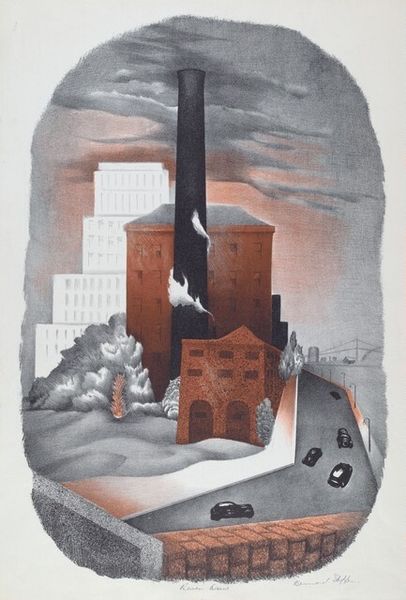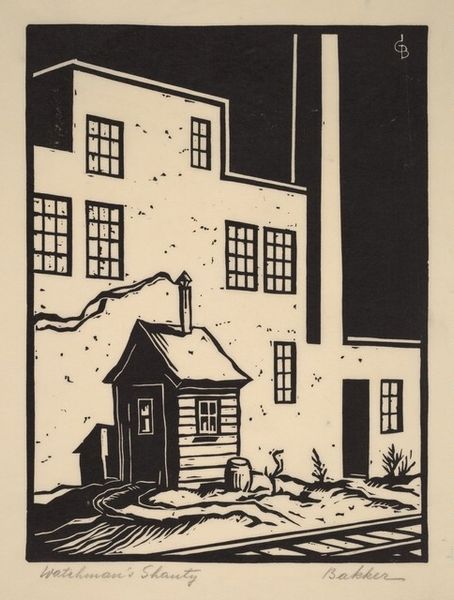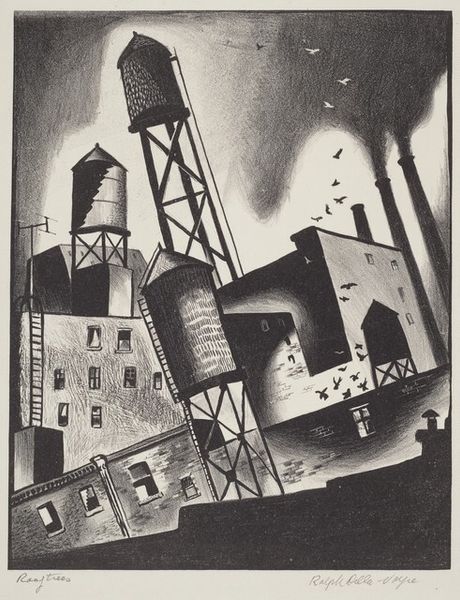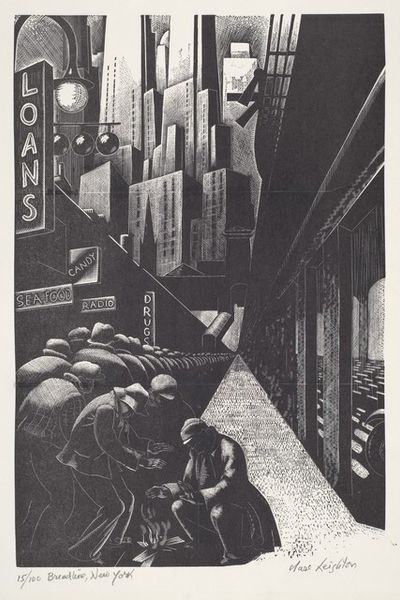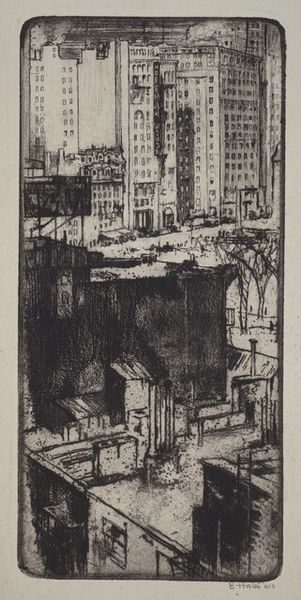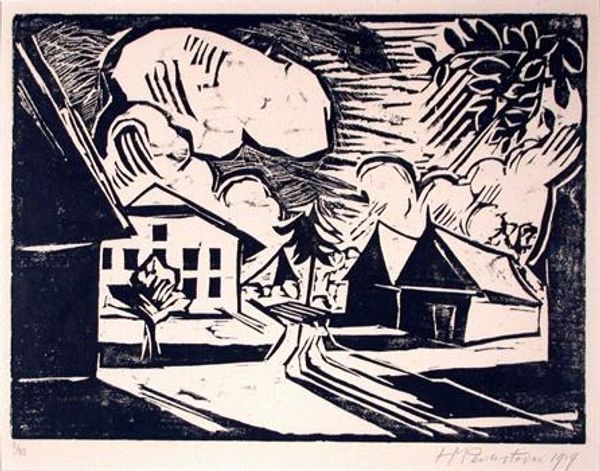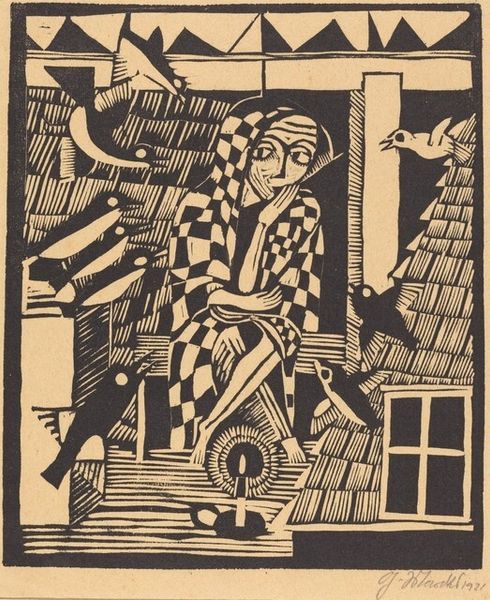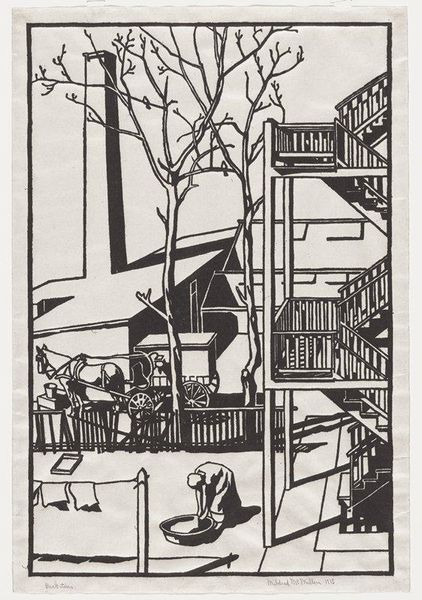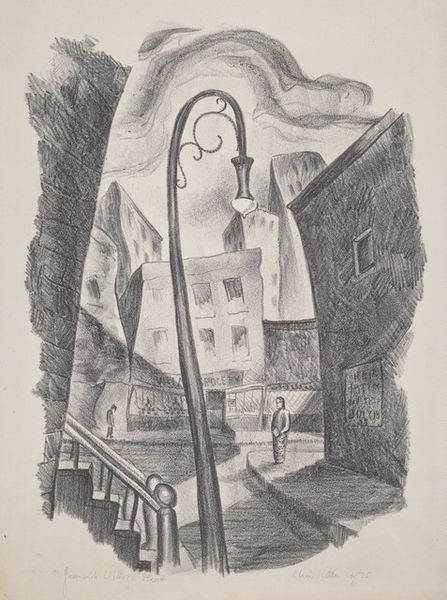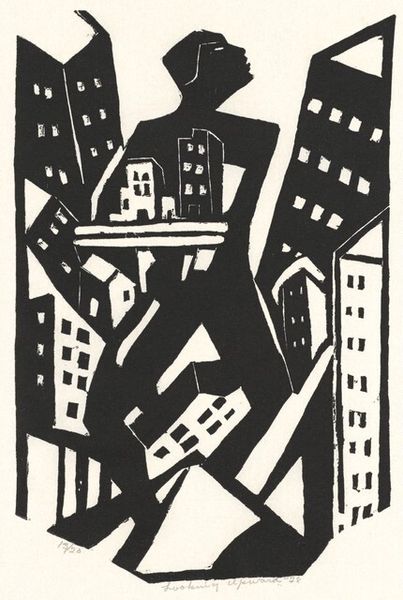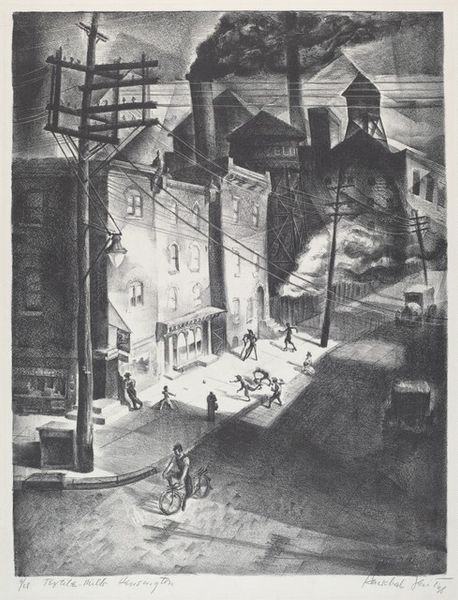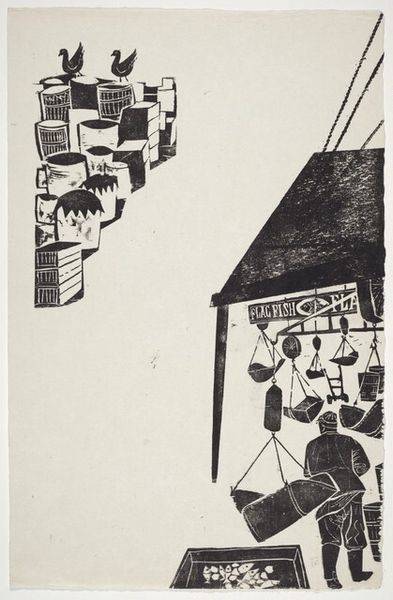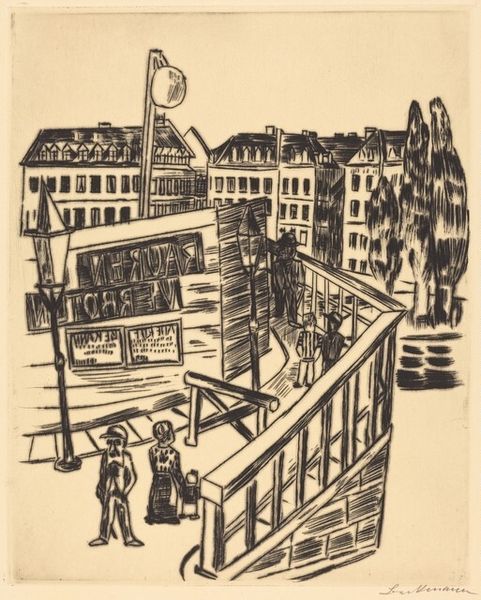
drawing, print, ink, woodcut
#
night
#
tree
#
drawing
# print
#
ink line art
#
ink
#
expressionism
#
woodcut
#
cityscape
#
street
Copyright: Public domain US
Editor: This is "White Nights," a 1922 woodcut and ink print by Mstislav Dobuzhinsky. I find its mood really unsettling—the high contrast and sharp angles create a sense of unease. What do you see in this piece? Curator: Beyond the immediate expressionistic impact, I see a powerful commentary on the individual’s place within a rapidly changing society. Dobuzhinsky, working in a tumultuous post-revolutionary Russia, captures a sense of alienation. The lone figure, almost swallowed by the looming architecture, speaks volumes about the individual’s struggle against overwhelming systems and perhaps oppressive ideologies. What about the title “White Nights” and the darkness depicted? What contradictions or social tensions might Dobuzhinsky be highlighting through this seeming paradox? Editor: That's a great question! The "White Nights" festival is a celebration of summer, of lightness and community. But here, everything is dark and isolated. So, maybe it's about the broken promises of the revolution, the failure to deliver that promised light? Curator: Exactly! We could analyze it further, the stark contrast amplifies a pervasive anxiety about loss and uncertainty, and this resonates deeply within broader narratives around identity, displacement, and the search for meaning after widespread trauma. The architecture itself seems to both confine and observe the lone individual. How does the style contribute to the meaning? Editor: The harsh lines definitely enhance the feeling of confinement and anxiety. It almost feels like you’re trapped. Curator: I agree, and seeing it this way adds another layer of interpretation, it prompts us to reflect upon those disaffected during such events, the societal consequences. Editor: That’s so helpful to consider, thank you. Now, I am more able to recognize Dobuzhinsky’s commentary about marginalization through social and political lenses. Curator: Indeed. By interrogating the artwork and its era, it provokes thoughts of human resilience. We can learn something significant, if we are courageous enough to confront these challenging representations of the human condition.
Comments
No comments
Be the first to comment and join the conversation on the ultimate creative platform.

